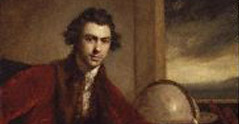|
JAPAN THROUGH WESTERN EYES:
Manuscript Records of Traders, Travellers, Missionaries and Diplomats, 1853-1941
Part 10: Japan Manuscripts from the Oriental Manuscripts Collection at the British Library
Publisher's Note
The views of Westerners on Japan were shaped both by the accounts of those who went there and by the materials that they brought back.
Dr Philipp Franz von Siebold (1796-1866), or Shiborutu-san, as he is known in Japan, is a prime example of this. He first travelled to Deshima, Japan in 1823 and was one of the first Europeans to teach Western medicine in Japan. He took a keen interest in the social and natural history of the region, established a strong network of Japanese friends and collected material avidly. Commodore Perry regarded him as the greatest authority on Japan in the West.
His ethnographic materials formed the basis of the National Museum of Ethnology in Leiden. The collection of Japanese manuscripts he assembled together with his son, Alexander von Siebold (1846-1911), went partly to Ruhr-Universitat Bochum and partly to the British Library. It is described by Dr Yu-Ying Brown of the British Library as “one of the most diversified Japanese collections ever acquired from a single person” and “a monument to the zeal and versatility of its originator.”
The material held at the British Library was gathered during his trips to Japan from 1823 to 1829 and from 1859 to 1862 and is a goldmine for those exploring the late Edo period in Japan. The material is remarkably diverse and covers topics such as:
- Contemporary political intrigues (OR Mss 864, 865, 928);
- The history of Nagasaki (OR Mss 939);
- Japanese foreign relations (OR Ms 872);
- Ancient tales and songs (OR Mss 870, 899-900, 906);
- Music in Japan (OR Mss 955-957, 960-961);
- Japanese swords and sword smiths (OR Mss 935-937);
- The preparation of tea (OR Mss 945-948);
- Portraits of Japanese figures (OR Mss 875, 881);
- Description of places: islands of Izu (OR Ms 941), Musashi (OR Mss 943-944), Corea (OR Ms 958), Lew-Chew (Ryukuyu) (OR Ms 959)
There are also extensive sources covering the laws of Japan; stratagems for war; geography; magic and religion and flora and fauna.
In addition to the Siebold Collection, the British Library holds many other Japanese manuscripts describing life during the Edo and Meiji periods. These are equally wide ranging in their nature. Sample items include:
- OR 1266 History of the Mikados
- OR 1288 Journal of a mission to Europe
- OR 1600 Specimens of calligraphy
- OR 1601 Inscriptions on ancient swords
- OR 1602 Treasures of the Toda temple
- OR 1616 On sacrificial incense
- OR 2158 Japanese mission to America
- OR 2633 Record of journeys in China and Annan
- OR 2635 Account of Corea, Lin-kin and Yezo
- OR 2642 Record of a journey to Russia
- OR 2648 Diary of an embassy to America
- OR 4702 Shoka-fu – Japanese song book
- OR 5457 The murder of the Regent Ini Massuke
Taken together, these sources will enrich our understanding of Japan and on the ways in which different cultures saw each other.
<back
|















